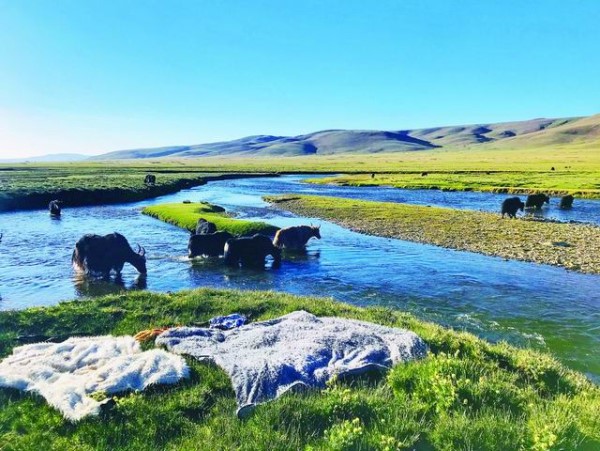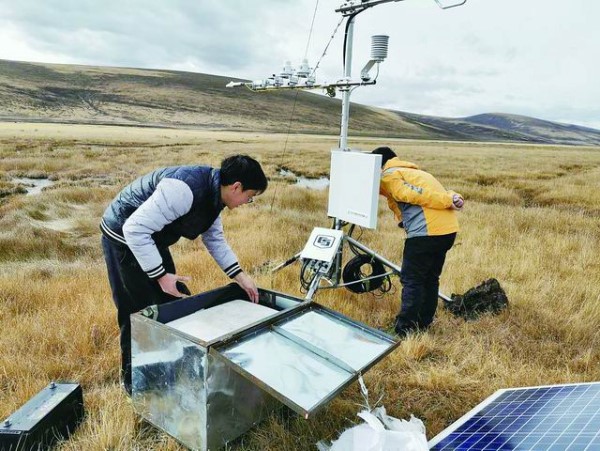Wetlands are called "the kidneys of the earth", and the alpine wetlands are one of the natural ecosystems with the richest biodiversity and the highest productivity per unit area on the Qinghai-Tibet Plateau. It is also an extremely important water conservation area and climate regulation area in China. Such an important alpine wetland, how much its "family property" is, and how it has changed, has not yet been fully answered. Recently, the second symposium on "Wetland Ecosystem and Hydrological Process Changes" for the Second Qinghai-Tibet Plateau Comprehensive Scientific Investigation was held at the University of the Chinese Academy of Sciences, and a consultation composed of academicians Chen Yiyu, Fu Bojie, Zhao Jindong, Wei Fuwen and Yu Guirui was established.
A blank page left by the first scientific investigation on the Qinghai-Tibet Plateau
If the first comprehensive scientific investigation of the Qinghai-Tibet Plateau is a "big discovery scientific expedition," then there is still a blank page among the fruitful results-the alpine wetland. As the concept has not yet been systematically established and limited by the conditions at the time, the alpine wetland was not listed as a separate type, which has become a mystery left in the first comprehensive scientific investigation of the Qinghai-Tibet Plateau. In addition, due to the complex environment and difficulty in depth, the relevant basic data and data on the alpine wetlands of the Qinghai-Tibet Plateau are very scarce.
Changing the research status of alpine wetlands
Since 2017, the second comprehensive scientific investigation of the Qinghai-Tibet Plateau has been carried out gradually. In the second half of 2019, the "Ecosystem and Ecological Security" project was launched as one of the ten major tasks of the scientific expedition, and the "Wetland Ecosystem and Hydrological Process Changes" was officially launched as one of them. Understanding the types and distribution of alpine wetlands on the Qinghai-Tibet Plateau is the basis and key to wetland scientific research. Alpine wetland is an important type of ecosystem on the Qinghai-Tibet Plateau, which plays an important role in regulating regional climate and ecological security, affecting regional climate formation, water conservation and supply, biodiversity maintenance, bird migration and habitat, animal husbandry production, and people’s lives and regional social and economic development. Therefore, it is very important to evaluate the structure and function of the alpine wetland ecosystem. The wetlands of the Qinghai-Tibet Plateau are also breeding grounds and migratory stops for a large number of waterbirds, and some birds are also carriers of important infectious pathogens. In addition, the wetland scientific investigation will also carry out scientific investigation and research on the ecological hydrological processes and water storage functions of typical wetlands, the dynamic characteristics of alpine peat swamp wetlands and their response to climate change.
Provide scientific basis for protection
In recent years, with the warming of the climate environment, overall humidification and intensification of human activities, the alpine wetlands of the Qinghai-Tibet Plateau have actually undergone major changes. The Status of Ecological Civilization Construction on the Qinghai-Tibet Plateau released in 2018 shows that from 1990 to 2006, the wetlands on the Qinghai-Tibet Plateau showed a state of continuous degradation, decreasing at a rate of 0.13% per year, and the total area was reduced by about 3000 square kilometers. Since 2006, under the combined effects of wetland protection and natural factors, the area of wetland has recovered significantly. And the ultimate goal of this special subject is to find out the distribution, resources and protection status of the alpine wetlands on the Qinghai-Tibet Plateau, and evaluate the health of its ecosystems, and finally put forward the protection countermeasures and measures for the alpine wetlands on the Qinghai-Tibet Plateau.
(Excerpted from the 4th edition of "China Science News" 2020-06-08 Comprehensive)

Nam Co Lake, Tibet
Image provided by University of Chinese Academy of Sciences

Team members used the flux tower to measure in Shiqu, Sichuan.
Image provided by Chengdu Institute of Biology, Chinese Academy of Sciences
.. ...